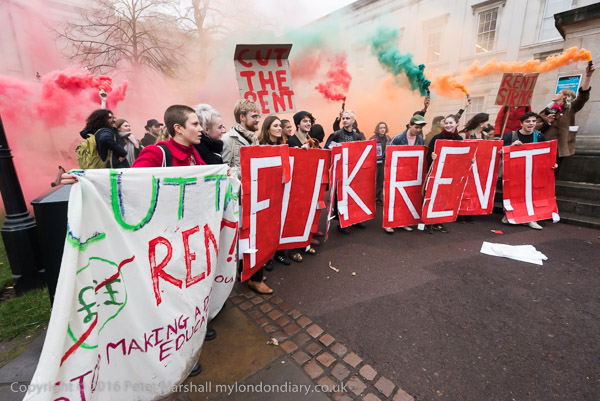
Students have more or less always protested, though they sometimes seem rather passive to those of us who were students in the sixties. We protested about various things but in particular about education and the universities, where we sat in various offices and liberated documents about the connections between the universities and the military-industrial complex and called for a revolution and an end to an education system that was geared to supporting the status quo rather than questioning it.
We got a few concessions but really achieved little, though perhaps universities did start to take the teaching of undergraduates a little more seriously and a few more radical courses emerged, though it was more a matter of fashion rather than a change of direction.
But what we have seen since then is an increasing corporatisation of the universities and the professionalisation of management, with students less and less seen as an important part of a collegiate body and more as units to be processed and cash sources to be milked.
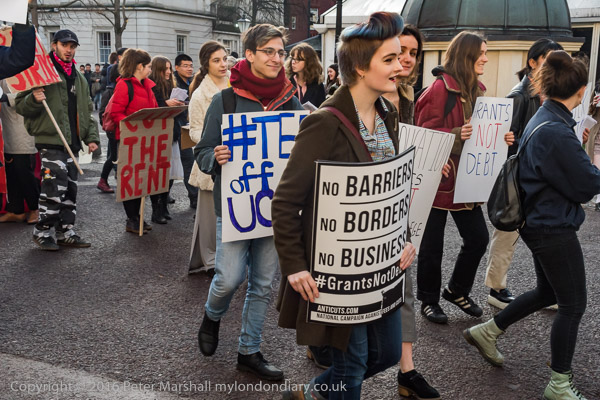
It’s a process which has been given a huge boost with the removal of grants and the introduction of student loans and huge course fees for students.
Of course it isn’t just the universities that see students as sources of profit, but also the private companies – in which many in Parliament, particularly on the Tory side have an interest. Student loans have an interest rate which is set to rise to more than 24 times the official Bank of England base rate next month, and student loan debt is now more than £100 billion and fast growing. It is already around one and a half times the total UK credit card debt. The student loans company was set up as a government owned non-profit company, but student debt is now being sold off to private companies.
Another huge earner from students is the provision of student housing, and many of the cranes now visible in London are building high-rise towers for students – or at least for wealthy students, as the rents in many of them are equal or greater than the maximum student loans.
Students used to live either in university halls of residence, in digs with local landladies providing bed and breakfast (and sometimes an evening meal) or in private flats, usually owned by small landlords. Now universities see halls of residence as businesses to make money rather than as a service to its members, and providing student flats has become a huge and highly profitable big business, attracting capital from overseas – such as Singapore’s sovereign wealth fund.
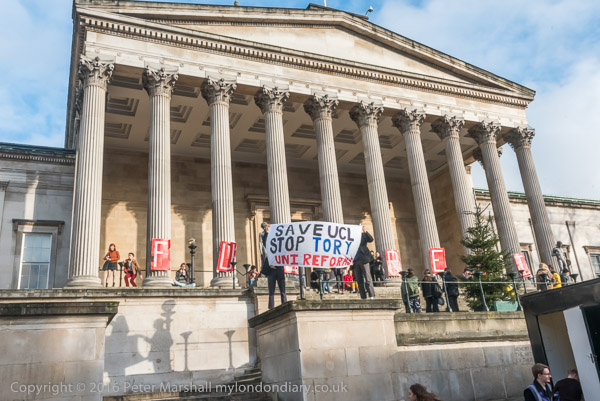
University College London, normally now only known by its initials UCL, has a number of halls of residence, and last year over a thousand students staged a rent strike. Some were striking because of the appalling conditions of their rooms, but others simply because the rents were too high, and the strike was a success, winning over £1.5m in concessions.
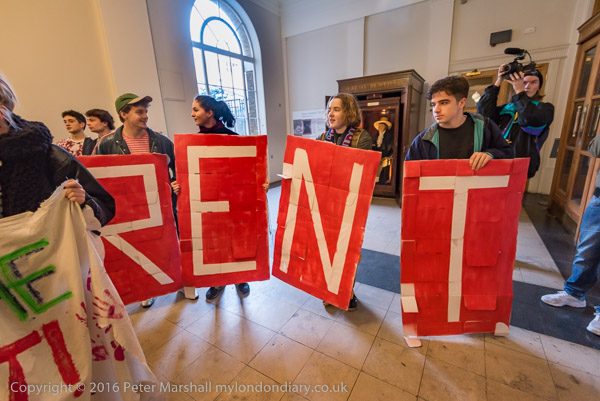
But students say the rents are still too high, say many students have to have two or three part-time jobs to study and live in London. They asked for a 10% cut in rents and were protesting after UCL management refused their demand.
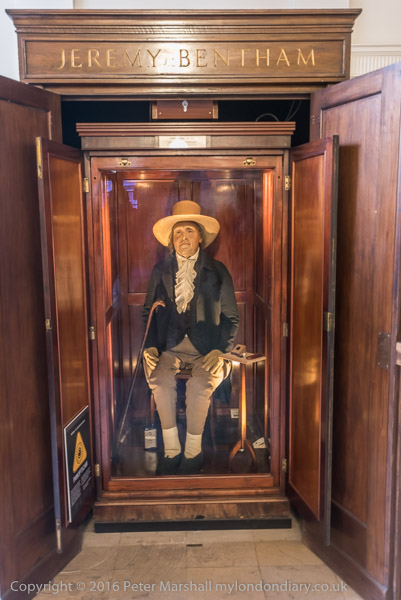
The protest started in the main quad at UCL with its steps and classical architecture, and after a few short speeches took a tour inside the main buildings, passing perhaps its most famous resident, its “spiritual founder”, Jeremy Bentham, (1748-1832), certainly now its oldest member at 268, still sitting in his cupboard.
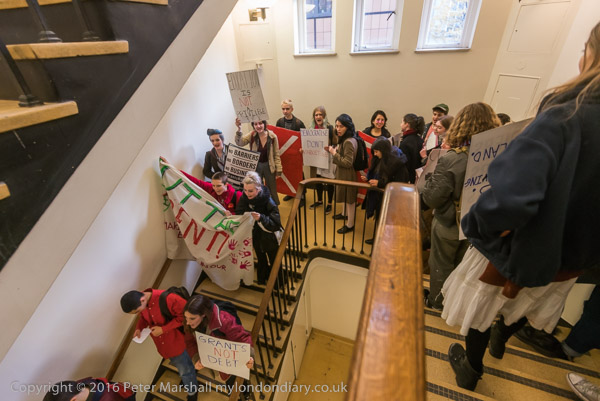
Fortunately the students knew the way as we made our way along corridors and down stairs eventually to emerge into a courtyard and walk around the streets back to the main quad for some more speeches …

and of course some smoke flares. I made a lot of pictures (and you can see quite a few of them on My London Diary) but wasn’t entirely happy. Smoke is rather unpredictable and it’s difficult to know the best distance; getting in too close can simply mean your whole view becoming a coloured mist.
UCL Students protest rents and marketisation
______________________________________________________
There are no adverts on this site and it receives no sponsorship, and I like to keep it that way. But it does take a considerable amount of my time and thought, and if you enjoy reading it, a small donation – perhaps the cost of a beer – would be appreciated.
My London Diary : Buildings of London : River Lea/Lee Valley : London’s Industrial Heritage
All photographs on this and my other sites, unless otherwise stated, are taken by and copyright of Peter Marshall, and are available for reproduction or can be bought as prints.
To order prints or reproduce images
________________________________________________________